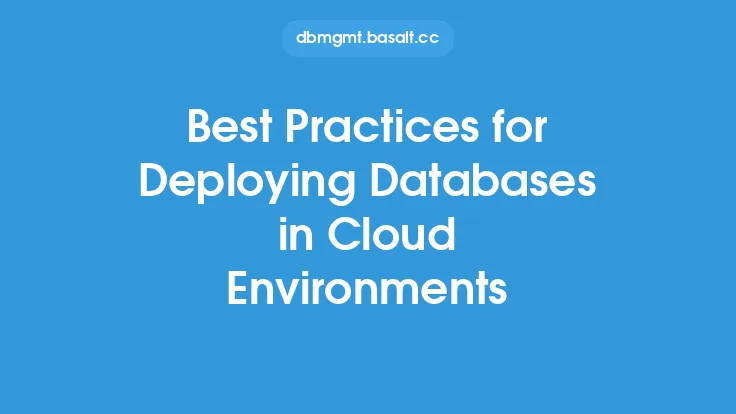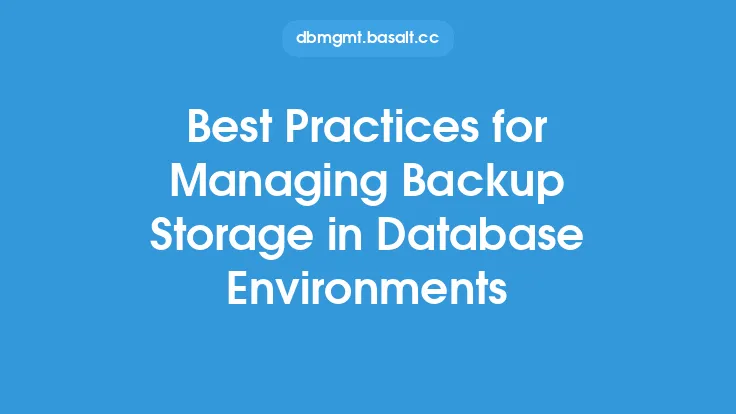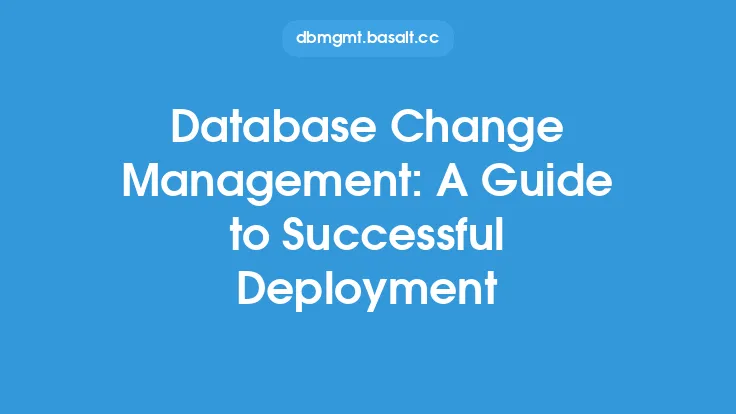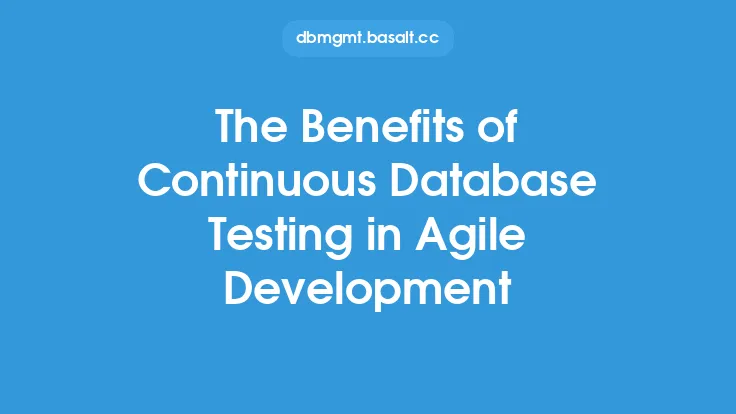Database deployment is a critical aspect of database implementation, and with the increasing adoption of containerization, it's essential to understand how to deploy databases in containerized environments effectively. Containerization provides a lightweight and portable way to deploy applications, and databases are no exception. In this article, we'll delve into the world of database deployment in containerized environments, exploring the benefits, challenges, and best practices for deploying databases in containers.
Introduction to Containerization
Containerization is a virtualization technique that allows multiple isolated systems to run on a single host operating system. Containers provide a lightweight and portable way to deploy applications, and they've become increasingly popular in recent years. Containers are similar to virtual machines, but they're more efficient and require fewer resources. They share the same kernel as the host operating system and run as a process, making them faster and more lightweight than virtual machines.
Benefits of Containerized Database Deployment
Deploying databases in containerized environments offers several benefits, including:
- Isolation: Containers provide a high level of isolation, which ensures that databases running in different containers do not interfere with each other.
- Portability: Containers are portable, meaning that databases can be easily moved between environments, such as from development to production, without requiring significant changes.
- Efficient Resource Utilization: Containers are lightweight and require fewer resources than virtual machines, making them ideal for deploying databases in resource-constrained environments.
- Simplified Management: Containers provide a simplified way to manage databases, as they can be easily started, stopped, and scaled as needed.
Containerization Platforms for Database Deployment
Several containerization platforms are available for deploying databases, including:
- Docker: Docker is one of the most popular containerization platforms, and it provides a wide range of tools and features for deploying databases in containers.
- Kubernetes: Kubernetes is a container orchestration platform that provides a scalable and secure way to deploy databases in containers.
- Open Container Initiative (OCI): OCI is an open-source containerization platform that provides a standardized way to deploy databases in containers.
Database Containerization Options
Several database containerization options are available, including:
- Official Database Images: Many database vendors provide official container images, such as PostgreSQL, MySQL, and Microsoft SQL Server.
- Third-Party Database Images: Third-party vendors also provide database container images, such as Oracle Database and IBM DB2.
- Custom Database Images: Custom database images can be created using a base image and adding the required database software and configuration.
Challenges of Containerized Database Deployment
While containerized database deployment offers several benefits, it also presents some challenges, including:
- Data Persistence: Containers are ephemeral, meaning that data is lost when the container is restarted or deleted. To overcome this challenge, persistent storage solutions, such as volumes or persistent containers, must be used.
- Networking: Containers require networking to communicate with other containers and external systems. Networking can be complex, especially in large-scale deployments.
- Security: Containers provide a high level of isolation, but they're not immune to security threats. Additional security measures, such as encryption and access control, must be implemented to protect databases in containers.
Best Practices for Containerized Database Deployment
To ensure successful containerized database deployment, follow these best practices:
- Use Official Database Images: Use official database images from vendors to ensure that databases are properly configured and secured.
- Implement Persistent Storage: Implement persistent storage solutions to ensure that data is not lost when containers are restarted or deleted.
- Configure Networking: Configure networking to ensure that containers can communicate with other containers and external systems.
- Implement Security Measures: Implement security measures, such as encryption and access control, to protect databases in containers.
- Monitor and Log: Monitor and log containerized databases to ensure that issues are detected and resolved quickly.
Conclusion
Database deployment in containerized environments offers several benefits, including isolation, portability, efficient resource utilization, and simplified management. However, it also presents some challenges, such as data persistence, networking, and security. By following best practices, such as using official database images, implementing persistent storage, configuring networking, implementing security measures, and monitoring and logging, you can ensure successful containerized database deployment. As containerization continues to evolve, it's essential to stay up-to-date with the latest trends and best practices to ensure that your databases are deployed effectively and efficiently in containerized environments.





